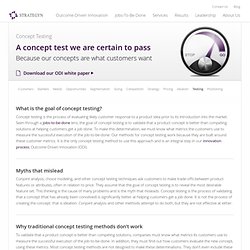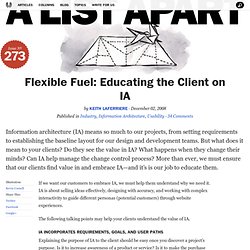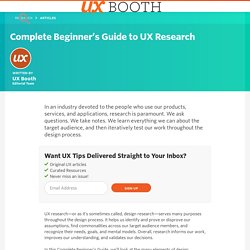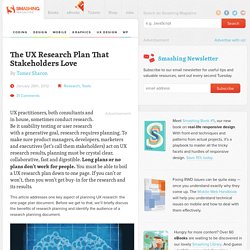

Methods and Process. What is the goal of concept testing?

Concept testing is the process of evaluating likely customer response to a product idea prior to its introduction into the market. Seen through a jobs-to-be-done lens, the goal of concept testing is to validate that a product concept is better than competing solutions at helping customers get a job done. To make this determination, we must know what metrics the customers use to measure the successful execution of the job-to-be-done. Our methods for concept testing work because they are built around these customer metrics. It is the only concept testing method to use this approach and is an integral step in our innovation process, Outcome-Driven Innovation (ODI).
Myths that mislead Conjoint analysis, choice modeling, and other concept testing techniques ask customers to make trade-offs between product features or attributes, often in relation to price. Flexible Fuel: Educating the Client on IA. Information architecture (IA) means so much to our projects, from setting requirements to establishing the baseline layout for our design and development teams.

But what does it mean to your clients? Do they see the value in IA? What happens when they change their minds? Can IA help manage the change control process? More than ever, we must ensure that our clients find value in and embrace IA—and it’s is our job to educate them. If we want our customers to embrace IA, we must help them understand why we need it. The following talking points may help your clients understand the value of IA. IA incorporates requirements, goals, and user paths#section1 Explaining the purpose of IA to the client should be easy once you discover a project’s purpose. I often tell clients that IA establishes the baseline, or foundation, for a solid site structure. IA mitigates scope creep#section2 With a solid IA, the customer’s project gets delivered on time and on budget.
Can You Say That in English? Explaining UX Research to Clients. The new business meeting was going swimmingly—that is, until the client started asking questions about our design process.

Then we unleashed our lexicon of specialized user experience (UX) research terminology. Article Continues Below Why should we do that thing you called…what was it, task analysis? We’d like some of those personas. They’re important, right? As mental models flew about the room, I realized how hard it is for clients to understand the true value of UX research. I created a cheat sheet to help you pitch UX research using plain, client-friendly language that focuses on the business value of each exercise.
Try a little tenderness#section1 Strong UX thinking is founded on observed user behavior. As UX researchers, we’re hired to be the glue between business stakeholders and users. Persona-planning1.png (PNG Image, 914 × 460 pixels) Can You Say That in English? Explaining UX Research to Clients. Complete Beginner's Guide to Design Research. In an industry devoted to the people who use our products, services, and applications, research is paramount.

We ask questions. We take notes. We learn everything we can about the target audience, and then iteratively test our work throughout the design process. Want UX Tips Delivered Straight to Your Inbox? Original UX articles Curated Resources Never miss an issue! UX research—or as it’s sometimes called, design research—serves many purposes throughout the design process. In this Complete Beginner’s Guide, we’ll look at the many elements of design research, from interviews and observations, to usability testing and A/B testing. The UX Research Plan That Stakeholders Love. UX practitioners, both consultants and in house, sometimes conduct research.

Be it usability testing or user research with a generative goal, research requires planning. To make sure product managers, developers, marketers and executives (let’s call them stakeholders) act on UX research results, planning must be crystal clear, collaborative, fast and digestible. Long plans or no plans don’t work for people. You must be able to boil a UX research plan down to one page. If you can’t or won’t, then you won’t get buy-in for the research and its results. This article addresses one key aspect of planning UX research: the one-page plan document. 1(Image: Patrick Hoesly2) A word about stakeholders.
The Benefits Of Research Planning Very generally speaking, UX research can answer two types of questions: Concept Development: How to Conduct a Concept Test. In last week’s post, I introduced concept testing and committed to write about how to actually conduct a test and to provide an example this week.

There are several general categories of “concept tests,” so there isn’t an exact formula for how to conduct one. With that being said, I’ll write about general principles and guidelines to follow as you conduct your next concept test. What to Look for in a Concept Test Concept tests look for early points of product weakness and market failure that can be fixed pre-launch. The core problem that concept tests target is addressed in the following list of must “identify” items: Survey Components for a Basic New Product Concept Survey Concept tests are easily constructed once the researcher is aware of the key components to be included in the test instrument.
The major components and measures of a concept test include: Concept Presentation Describe the concept completely.